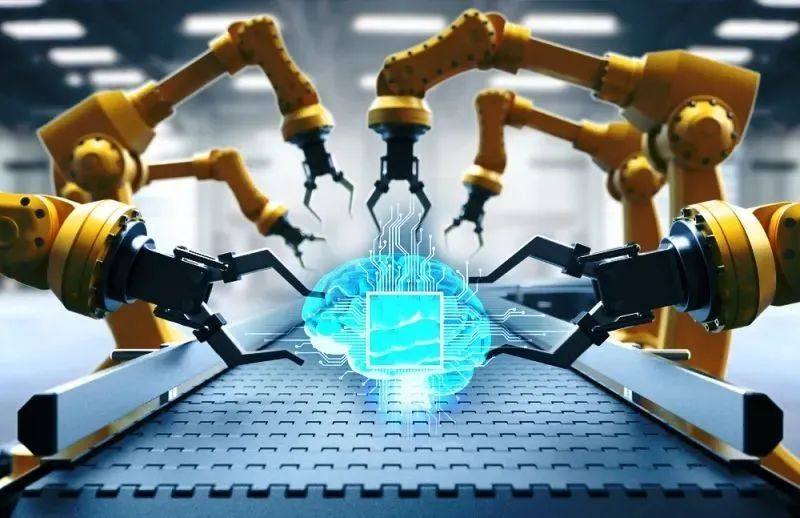Frontiers in Technology: AI Hardware, Chips Industry, and Robotics
In today's rapidly evolving technological landscape, the development of artificial intelligence (AI), semiconductor manufacturing, and related hardware devices has become a global focus. This article will integrate recent news and explore the latest trends and developments in the industry.
I. OpenAI Enters the Screenless AI Device Market
After acquiring iO, OpenAI is planning to launch a compact screenless AI device. This device will integrate OpenAI's technical expertise with iO's design strengths and is expected to be released in 2026. The device is small enough to be placed on a desk or carried in a pocket. OpenAI CEO Sam Altman has described it as the "third core device," alongside the MacBook Pro and iPhone, emphasizing its role as an "AI companion." The introduction of this device signals a more intense competition in the AI hardware market and offers consumers a new, more convenient way to interact with AI.
II. TSMC Warns of Tariff Policy Risks
TSMC recently warned that the proposed US tariffs on foreign-made chips could jeopardize its $165 billion investment in advanced semiconductor manufacturing facilities in Arizona. In its public comments submitted to the US Department of Commerce, the company pointed out that the decline in demand due to tariffs could affect the feasibility of its US operations. TSMC's planned fabs in Arizona will eventually account for about 30% of its global capacity for cutting-edge 2-nanometer and more advanced chips. Currently, TSMC has started construction on its third fab in the state, which will initially produce 2-nanometer chips and later adopt its next-generation A16 process technology. TSMC emphasized that the increased costs and reduced demand due to tariffs could undermine the viability of its US operations.
III. Nvidia and Navitas Semiconductor Collaborate on High-Voltage DC Architecture
Nvidia and Navitas Semiconductor have announced a collaboration on Nvidia's next-generation 800-volt high-voltage direct current (HVDC) architecture. Navitas Semiconductor stated that this architecture will support the power systems for Nvidia GPUs, aiming to establish an efficient and scalable power supply for next-generation AI workloads. This collaboration is expected to enhance the performance and energy efficiency of AI hardware, reduce operational costs, and meet the growing demand for computing power.
IV. Google Co-Founder Cautious About Humanoid Robots

At the Google I/O Developer Conference, Google co-founder Sergey Brin expressed caution regarding humanoid robots. Brin noted that the pursuit of humanoid robots is largely driven by the fact that the world is designed for humans, but this mindset underestimates the ability of AI to quickly adapt to multiple scenarios through simulation and real-world training. He argued that it is not necessary to strictly replicate human arms, legs, or even wheels to make robots function effectively. Although Brin is skeptical about the direction of humanoid robots, he acknowledged that many top talents are currently working in this field.
V. Super Micro Computer Expands Server Capacity in the US
Super Micro Computer CEO Charles Liang announced that, with the accelerating global demand for AI, the company plans to expand its server production capacity in the United States. Liang pointed out that the growth in AI demand is very rapid, with significant opportunities in the US, Europe, and Japan. The company plans to expand production in states such as Mississippi and Texas to meet the growing market demand. This plan also reflects the accelerating trend of global AI infrastructure construction and the strategic layout of companies in local production.
Summary
From OpenAI's screenless AI device to TSMC's tariff risks, from Nvidia's HVDC architecture collaboration to Sergey Brin's caution about humanoid robots, and to Super Micro Computer's plan to expand server capacity, these developments showcase the latest trends in the technology industry in the fields of AI, semiconductor manufacturing, and hardware devices. As technology continues to advance, the development in these areas will continue to shape the global technology industry landscape.
Conevo IC distributor and popular recommended models
As a well-known IC distributor, Conevo is dedicated to providing high-quality semiconductor components, covering fields such as automotive electronics, industrial control, and power management. The following are several popular recommended ic models:
●TJA1051TK/3,118: High-speed CAN bus transceiver, suitable for automotive communication networks, supporting a transmission rate of 5Mbps, and featuring excellent EMC performance.
●TPS548A28RWWR: Synchronous step-down DC/DC converter, input voltage 4.5-18V, output current up to 8A, suitable for high-efficiency power supply design.
●EPM7256SRI208-10: CPLD programmable logic device, 208-pin package, suitable for complex logic control and interface expansion.
Website: www.conevoelec.com
Email: info@conevoelec.com








